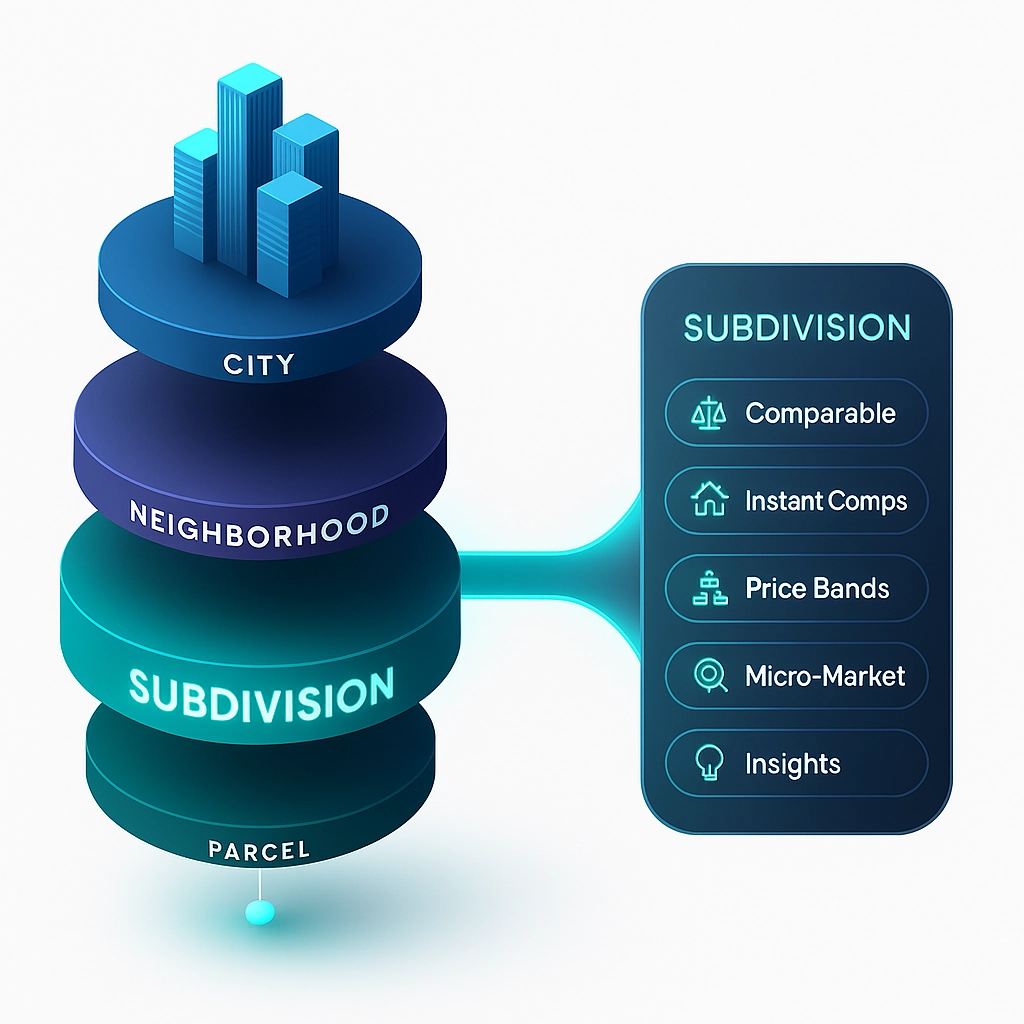Here’s an editorial-quality article based on your request, complete with a compelling, SEO-friendly title:
“Why Subdivisions Are the Secret to Unlocking Real Estate’s Micro-Market Goldmine”
In today’s real estate landscape, search platforms are still stuck in the past—grouping properties by ZIP codes, city names, or vague neighborhood boundaries. These are macro-level containers that gloss over what buyers and sellers actually care about: hyper-specific insights about where they live, or want to live.
But what if we told you the real magic lives one layer deeper—in the subdivisions?
🔍 What Is a Micro-Market?
A micro-market is the smallest, most actionable real estate segment that behaves like its own ecosystem. It reflects not just geography, but shared pricing trends, build quality, amenities, and community characteristics.
Micro-markets allow us to understand:
Why two identical homes 5 blocks apart sell at different prices.
Why some units move quickly while others sit.
Where the next price wave—or discount opportunity—might be hiding.
The problem? Most search engines can’t see them.
🏘️ Why Subdivisions Are the Best Representation of Micro-Markets
In residential real estate, especially across the U.S., subdivisions are the most consistent and practical expression of micro-markets.
They share:
Common builders and architectural styles
HOA rules and amenities (like pools, gyms, security gates)
School zoning and commute patterns
Unit layouts and price-per-square-foot ranges
Each subdivision behaves like its own mini-market—distinct from even the neighborhood or ZIP code it sits in. For instance, Tower A in a beachfront condo complex might command $400 more per square foot than Tower B, simply due to views, finishes, or maintenance history.
🚫 The Limitations of Macro-Market Thinking
Traditional real estate platforms group listings by ZIP codes or cities. But ZIP codes can contain:
Dozens of subdivisions
Contradictory pricing trends
Vastly different product types (luxury condos, townhomes, single-family homes)
Macro data hides micro truths.
This leads to poor valuations, misleading comps, and buyer confusion. And it makes it nearly impossible for sellers to position their home effectively.
⚡ Why Subdivisions.com Built the Subdivision Data Layer
At Subdivisions.com, we didn’t scrape generic data or buy leads. We built something no one else has:
🧠 A structured, verified, and proprietary subdivision database.
It’s the “missing data layer” in real estate search and valuation.
It unlocks:
🏘️ True apples-to-apples comparisons
📍 Context-rich search filters (by community, lifestyle, school zone, etc.)
📊 Real-time micro-market analytics
🤖 AI-native pricing tools that don’t generalize — they localize
Subdivisions aren’t just clusters of homes. They’re the atomic unit of residential identity.
🌍 The Future of Real Estate is Micro
As AI and consumer expectations evolve, generic search results and “estimate ranges” aren’t enough. What people want is clarity. They want to know:
What’s happening in their exact building, block, or community.
Where the opportunity is — and where it’s already passed.
How much to list, buy, offer, or walk away.
Subdivisions.com is building the infrastructure to make this possible.
Because when the data understands the market at its most local level — everything changes.
Would you like a complementary visual (e.g. “Macro vs Micro: Real Estate Search Then vs Now”) to go with this article?





Comments